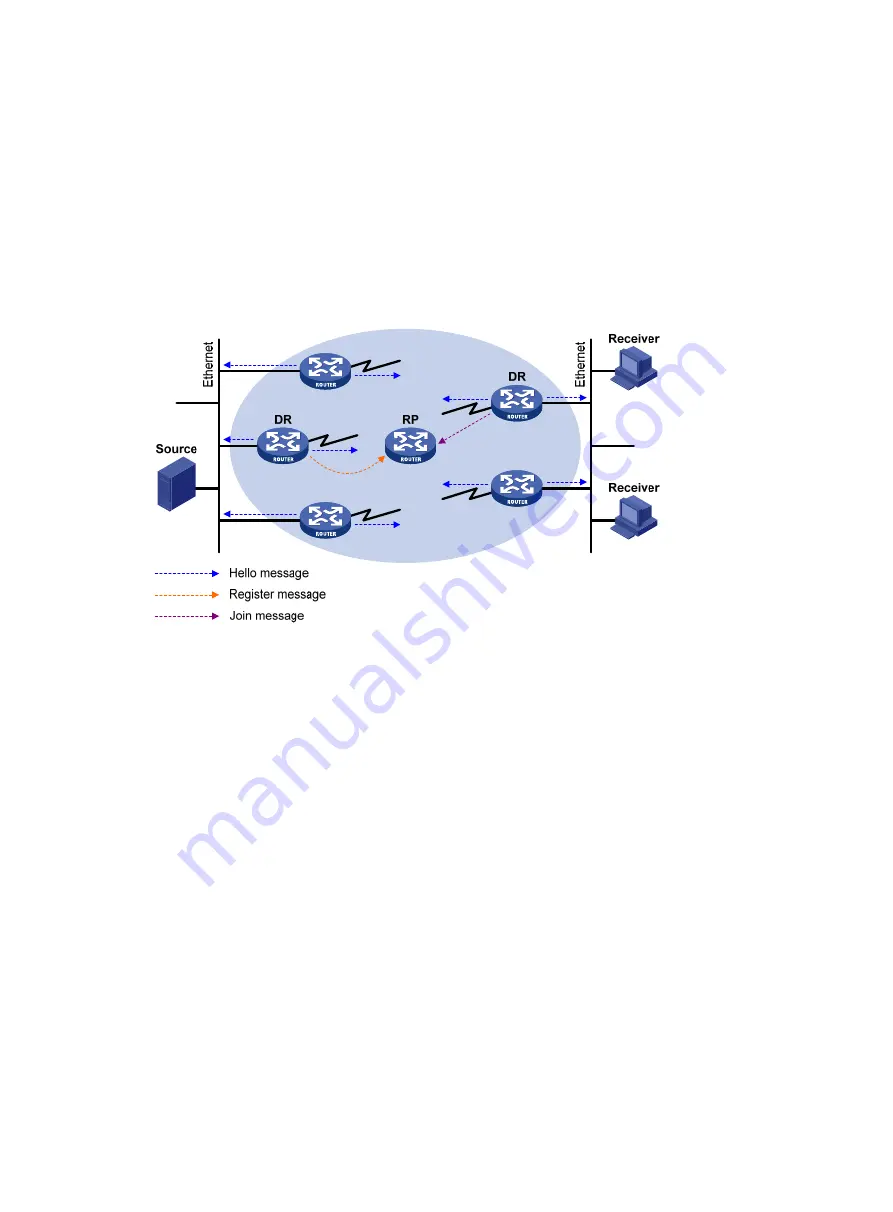
45
A DR must be elected in a shared-media network, no matter this network connects to multicast sources or
to receivers. The receiver-side DR sends join messages to the RP. The source-side DR sends register
messages to the RP.
A DR is elected on a shared-media subnet by means of comparison of the priorities and IP addresses
carried in hello messages. An elected DR is substantially meaningful to PIM-SM. PIM-DM itself does not
require a DR. However, if IGMPv1 runs on any shared-media network in a PIM-DM domain, a DR must
be elected to act as the IGMPv1 querier on that shared-media network.
IGMP must be enabled on a device that acts as a receiver-side DR before receivers attached to this device
can join multicast groups through this DR. For more information about IGMP, see "Configuring IGMP."
Figure 20
DR election
As shown in
, the DR election process is as follows:
1.
Routers on the shared-media network send hello messages to one another. The hello messages
contain the router priority for DR election. The router with the highest DR priority will become the
DR.
2.
In the case of a tie in the router priority, or if any router in the network does not support carrying
the DR-election priority in hello messages, the router with the highest IP address will win the DR
election.
3.
When the DR fails, a timeout in receiving a hello message triggers a new DR election process
among the other routers.
RP discovery
The RP is the core of a PIM-SM domain. For a small-sized, simple network, one RP is enough for
forwarding information throughout the network, and you can statically specify the position of the RP on
each router in the PIM-SM domain. An RP can serve multiple multicast groups or all multicast groups, but
a given multicast group can have only one RP to serve it at a time.
In most cases, however, a PIM-SM network covers a wide area, and a huge amount of multicast traffic
must be forwarded through the RP. To lessen the RP burden and optimize the topological structure of the
RPT, you can configure multiple C-RPs in a PIM-SM domain, among which an RP is dynamically elected
through the bootstrap mechanism. Each elected RP serves a different multicast group range. For this
purpose, you must configure a BSR.
















































